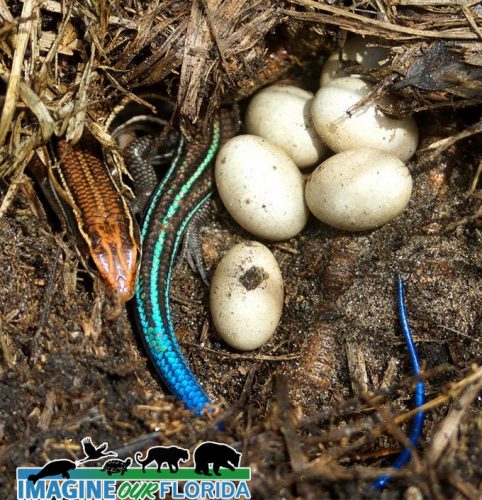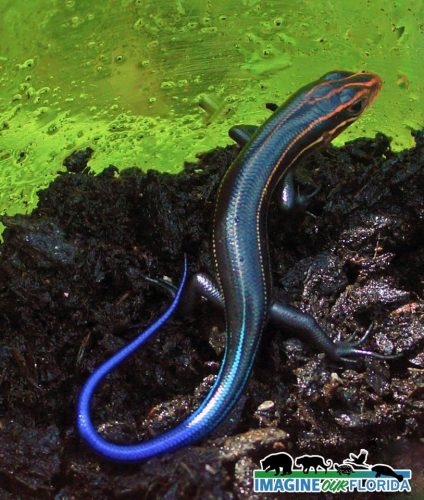These pictures might look like different skinks, but they are the same species. In the first picture, you can see that the eggs look painfully larger than the young skink next to them. Don’t worry. They are much smaller when laid. The eggs start small but will swell with water. The eggs are usually laid in a damp location with some burrowed areas around them. You may find them under flower pots or bricks. The second picture shows the vibrant color of the newborn skink. Newborns are about 4 cm in length. The bright colors will fade over time, but juveniles will retain the bright blue tail. You can see the bright coloring has faded in the third picture, leaving just the black and yellow stripes. This skink has just entered adulthood. Females will retain this appearance throughout the rest of their lives. In the fourth picture, you can see a full-grown male skink. The stripes have faded, and the head is a bright red color. These little lizards are very fast, and it’s difficult to see them, but they are fascinating to watch as they hunt for small insects. Much like a cat, they flicker their tail as they stalk their prey.


